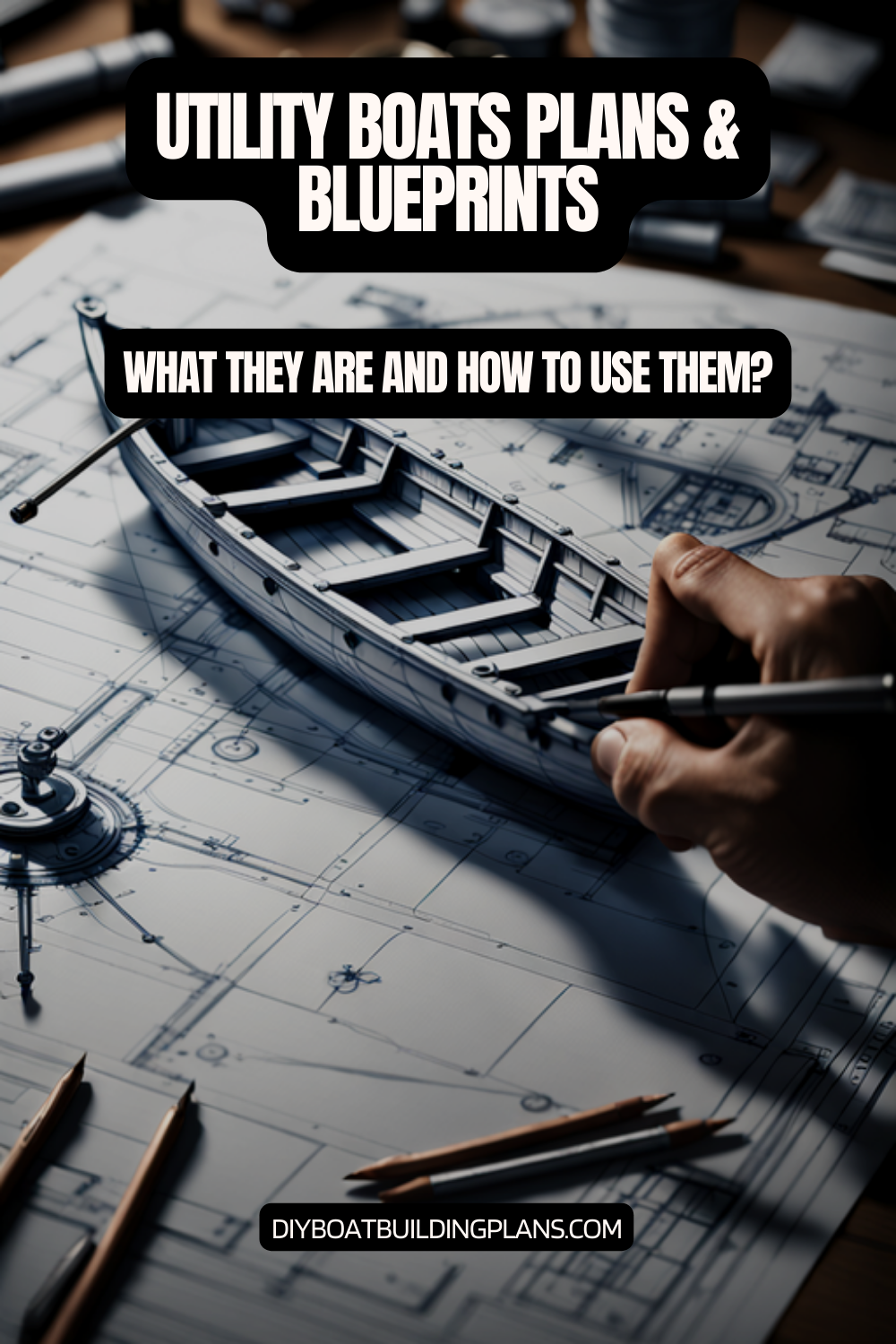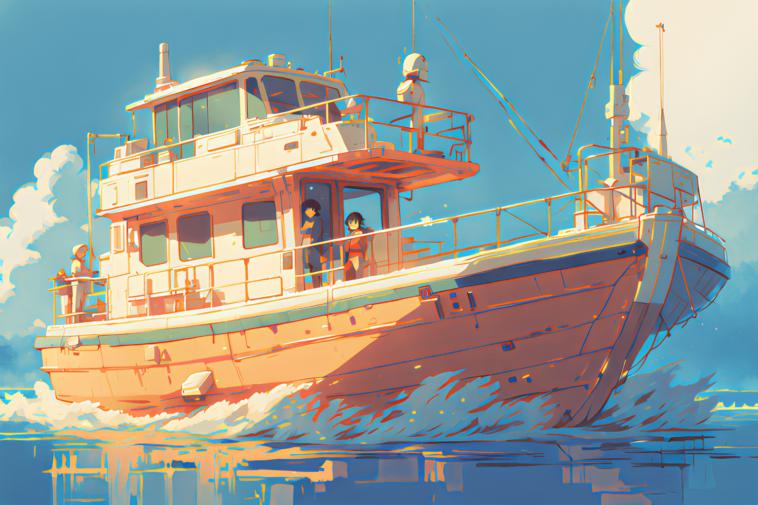Overview of Utility Boats Plans & Blueprints
Utility boats are versatile watercraft designed for various tasks and purposes. They are typically smaller in size compared to other types of boats, making them ideal for navigating shallow waters and tight spaces. Utility boats are commonly used in industries such as fishing, transportation, and rescue operations due to their maneuverability and functionality.
To build a utility boat, one must have a set of plans and blueprints. These detailed documents provide step-by-step instructions on how to construct the boat from scratch. They include measurements, diagrams, and material lists to ensure accuracy and efficiency during the building process. Utility boat plans and blueprints can be obtained from various sources, including online platforms, boatbuilding books, or professional boat designers.
Key Takeaways
- Utility boats are important for a variety of tasks, from fishing to transportation.
- There are different types of utility boats, including jon boats and skiffs, each with their own uses.
- Building your own utility boat can be cost-effective and allow for customization.
- Before choosing a plan, consider factors such as size, materials, and intended use.
- Proper maintenance and safety measures are crucial for the longevity and safe use of your utility boat.

Understanding the Importance of Utility Boats
Utility boats play a crucial role in a wide range of tasks and industries. In the fishing industry, they are used for commercial fishing operations, allowing fishermen to access remote areas and navigate through shallow waters where larger vessels cannot go. Utility boats are also essential for transportation purposes, especially in areas with limited infrastructure or water-based communities. They provide a means of transportation for people, goods, and supplies.
Furthermore, utility boats are vital in rescue operations. Their maneuverability and ability to navigate through challenging conditions make them valuable assets during emergencies. Whether it’s rescuing stranded individuals or providing support during natural disasters, utility boats can reach areas that are inaccessible by land or larger vessels.
Types of Utility Boats and Their Uses
There are several types of utility boats available, each with its own specific uses and advantages. One common type is the jon boat, which is characterized by its flat-bottomed design and wide beam. Jon boats are popular among fishermen due to their stability and ability to navigate shallow waters. They are often used for fishing in lakes, rivers, and marshy areas.
Another type of utility boat is the skiff. Skiffs are versatile and can be used for various purposes, including fishing, transportation, and recreational activities. They are typically lightweight and easy to maneuver, making them suitable for both calm and rough waters.
Dinghies are also considered utility boats, commonly used as tenders for larger vessels or as small recreational boats. They are compact, easy to handle, and can be used for short trips or as a means of transportation between a larger vessel and the shore.
Benefits of Building Your Own Utility Boat
| Benefits of Building Your Own Utility Boat |
|---|
| 1. Cost savings compared to buying a pre-built boat |
| 2. Customization options to fit specific needs and preferences |
| 3. Satisfaction and pride in building something with your own hands |
| 4. Learning new skills and gaining knowledge about boat building |
| 5. Ability to repair and maintain the boat yourself |
| 6. Potential for resale value if built to high standards |
Building your own utility boat offers several benefits. One of the main advantages is cost-effectiveness. By constructing the boat yourself, you can save a significant amount of money compared to purchasing a pre-built boat. Building materials and components are often more affordable than buying a fully assembled boat.
Additionally, building your own utility boat allows for customization options and personalization. You have the freedom to choose the design, features, and layout that best suit your needs and preferences. Whether you want additional storage compartments, modified seating arrangements, or specific equipment installations, building your own boat gives you the flexibility to create a vessel tailored to your requirements.
Moreover, building a utility boat can be a rewarding experience that brings a sense of satisfaction and pride. The process of constructing something with your own hands and seeing it come to life is fulfilling. It also provides an opportunity to learn new skills and gain knowledge about boatbuilding techniques.
Factors to Consider Before Choosing a Utility Boat Plan
Before embarking on the journey of building a utility boat, there are several factors to consider. First and foremost is your skill level in boatbuilding. Some plans may require advanced skills and experience, while others are more suitable for beginners. It’s essential to choose a plan that matches your skill level to ensure a successful build.
Budget is another crucial factor to consider. Building a boat involves purchasing materials, tools, and other necessary components. It’s important to set a budget and choose a plan that aligns with your financial capabilities. Some plans may require more expensive materials or specialized tools, so it’s essential to factor in these costs.
Lastly, the intended use of the utility boat should be taken into account. Different plans cater to specific purposes, such as fishing, transportation, or recreational activities. Consider how you plan to use the boat and choose a plan that suits your intended use.
When choosing a utility boat plan, it’s advisable to research and read reviews from other builders who have used the same plan. Their experiences and feedback can provide valuable insights and help you make an informed decision.
Essential Tools and Materials for Building a Utility Boat
Building a utility boat requires specific tools and materials to ensure a successful construction process. Some essential tools include a tape measure, saws (such as a circular saw or jigsaw), drill, screwdriver, clamps, and sandpaper. These tools are necessary for cutting, drilling, fastening, and finishing various components of the boat.
In terms of materials, plywood is commonly used for constructing the hull and other structural elements of the boat. Marine-grade plywood is recommended due to its durability and resistance to water damage. Other materials may include fiberglass cloth or epoxy resin for reinforcing certain areas of the boat.
It’s important to choose high-quality materials that are suitable for marine environments. Using subpar materials can compromise the integrity and longevity of the boat. Additionally, safety equipment such as goggles, gloves, and a dust mask should be worn when working with tools and materials.
Step-by-Step Guide to Building a Utility Boat
Building a utility boat requires careful planning and attention to detail. Here is a step-by-step guide to help you through the process:
1. Gather all the necessary tools and materials.
2. Study the utility boat plan thoroughly, familiarizing yourself with the instructions and diagrams.
3. Begin by constructing the hull, following the measurements and guidelines provided in the plan.
4. Assemble the frames and bulkheads, ensuring they are properly aligned and securely fastened.
5. Install the transom, which is the back part of the boat that supports the motor or propulsion system.
6. Continue building the deck, seats, and other structural components according to the plan.
7. Apply fiberglass cloth and epoxy resin to reinforce certain areas of the boat, if required.
8. Sand and smooth any rough surfaces, ensuring a clean finish.
9. Apply a suitable marine-grade paint or varnish to protect the boat from water damage and enhance its appearance.
10. Install any additional features or equipment, such as storage compartments, navigation lights, or seating arrangements.
11. Conduct a thorough inspection to ensure everything is properly assembled and secure.
12. Finally, launch your newly built utility boat into the water and enjoy your accomplishment.
Throughout the building process, it’s important to refer to the utility boat plan regularly and follow the instructions precisely. Take your time and pay attention to detail to ensure a successful build.
Tips for Customizing Your Utility Boat
One of the advantages of building your own utility boat is the ability to customize it according to your specific needs and preferences. Here are some tips for customizing your utility boat:
1. Consider adding additional storage compartments to keep your gear organized and easily accessible.
2. Modify the seating arrangement to accommodate more passengers or create a comfortable lounging area.
3. Install a livewell or baitwell if you plan on using the boat for fishing purposes.
4. Add rod holders or fishing rod racks for convenient storage of fishing equipment.
5. Install a trolling motor or other propulsion systems suitable for your intended use.
6. Customize the paint job or graphics to give your boat a unique and personalized look.
When customizing your utility boat, it’s important to strike a balance between functionality and aesthetics. Ensure that any modifications or additions do not compromise the structural integrity or safety of the boat.
Maintenance and Care for Your Utility Boat
Regular maintenance and care are essential to keep your utility boat in good condition and prolong its lifespan. Here are some tips for maintaining your boat:
1. Clean the boat thoroughly after each use, removing any dirt, debris, or saltwater residue.
2. Inspect the hull for any signs of damage, such as cracks or dents. Repair any damages promptly to prevent further deterioration.
3. Check the motor or propulsion system regularly, ensuring it is properly lubricated and functioning correctly.
4. Grease the trailer bearings and inspect the trailer for any signs of wear or damage.
5. Keep the boat covered when not in use to protect it from harsh weather conditions and UV rays.
6. Follow the manufacturer’s recommendations for winterizing the boat if you live in an area with cold temperatures.
By following these maintenance practices, you can ensure that your utility boat remains in optimal condition and performs reliably.
Download over 500 Boat Plans. Click on the link below.
-->Click Here<--
Safety Measures When Using a Utility Boat
Safety should always be a top priority when using a utility boat. Here are some important safety measures to consider:
1. Always wear a properly fitted personal flotation device (PFD) when on board.
2. Familiarize yourself with local boating regulations and adhere to speed limits and navigation rules.
3. Check weather conditions before heading out on the water and avoid boating in severe weather.
4. Inform someone of your boating plans, including your intended route and estimated time of return.
5. Carry essential safety equipment such as a first aid kit, fire extinguisher, whistle, and navigation lights.
6. Be aware of your surroundings and watch out for other boats, swimmers, or obstacles in the water.
7. Avoid alcohol consumption while operating a utility boat, as it impairs judgment and reaction time.
By following these safety measures, you can minimize the risk of accidents and ensure a safe boating experience.

Conclusion – Utility Boats Plans & Blueprints
In conclusion, utility boats are versatile watercraft that serve various purposes in industries such as fishing, transportation, and rescue operations. Building your own utility boat using plans and blueprints offers several benefits, including cost-effectiveness, customization options, and personal satisfaction.
Before choosing a utility boat plan, consider factors such as your skill level, budget, and intended use. Gather the necessary tools and materials, and follow a step-by-step guide to ensure a successful build. Customize your utility boat according to your specific needs and preferences, and maintain it regularly to prolong its lifespan.
Remember to prioritize safety when using a utility boat by following important safety measures and regulations. By considering all these aspects, you can embark on an exciting journey of building your own utility boat and enjoy the rewards it brings.
FAQs – Utility Boats Plans & Blueprints
What are utility boats?
Utility boats are small to medium-sized watercraft designed for various tasks such as transportation, fishing, and recreation. They are typically made of aluminum or fiberglass and have a flat bottom for stability.
What are utility boat plans and blueprints?
Utility boat plans and blueprints are detailed instructions and diagrams for building a utility boat from scratch. They include information on materials, tools, and techniques needed to construct the boat.
Who can use utility boat plans and blueprints?
Anyone with basic woodworking skills and access to tools can use utility boat plans and blueprints to build their own boat. However, it is recommended that individuals have some experience with boat building before attempting to construct a utility boat.
What materials are needed to build a utility boat?
The materials needed to build a utility boat include aluminum or fiberglass sheets, wood for framing, epoxy resin, screws, and other hardware. The specific materials needed will depend on the design of the boat and the builder’s preferences.
How long does it take to build a utility boat?
The time it takes to build a utility boat varies depending on the complexity of the design and the builder’s skill level. Some utility boats can be built in a few weeks, while others may take several months to complete.
What are the benefits of building a utility boat?
Building a utility boat allows individuals to customize the boat to their specific needs and preferences. It can also be a cost-effective way to own a boat, as building it yourself can be less expensive than buying a pre-built boat. Additionally, building a boat can be a rewarding and enjoyable experience for those who enjoy woodworking and boating.



